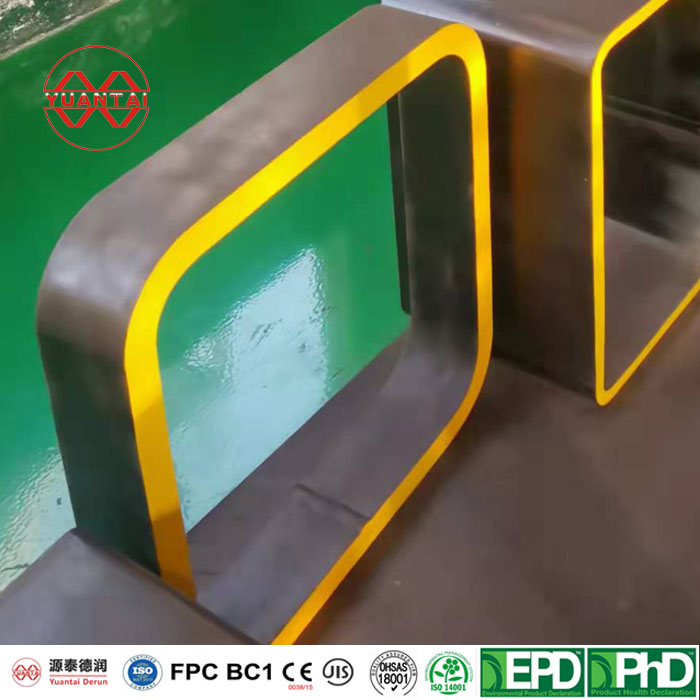In order to improve the surface hardness and wear resistance of 16Mn rectangular tubes, surface treatment, such as surface flame, high-frequency surface quenching, chemical heat treatment, etc. should be carried out for the rectangular tubes. Generally speaking, most of the high and medium frequency surfaces are quenched, and the heating temperature is 850-950 degrees. Due to poor thermal conductivity, the heating speed should not be too fast. Otherwise, melting cracks and quenching cracks will appear. High frequency quenching requires that the normalized matrix is mainly pearlite. Water spray or polyvinyl alcohol solution cooling. The tempering temperature is 200-400 ℃, and the hardness is 40-50hrc, which can ensure the hardness and wear resistance of the square tube surface.
The following key points shall be noted when quenching 16Mn square tube:
(1) The elongated pipe shall not be heated vertically in the salt bath furnace or well furnace as far as possible, so as to reduce the deformation caused by its net weight.
(2) When heating pipes with different sections in the same furnace, the small pipes shall be placed at the outer end of the furnace, and the large pipes and small pipes shall be timed separately.
(3) Each charging amount shall be compatible with the power level of the furnace. When the feeding amount is large, it is easy to pressurize and temperature rise, and the heating time needs to be extended.
(4) The quenching temperature of square rectangular tubes quenched with water or brine shall be taken as the lower limit, and the quenching temperature of oil or molten salt quenched shall be taken as the upper limit.
(5) During dual medium quenching, the residence time in the first quenching medium shall be controlled according to the above three methods. The moving time from the first quenching medium to the second quenching medium shall be as short as possible, preferably 0.5-2s.
(6) Pipes whose surface is prohibited from oxidation or decarburization shall be heated in a calibrated salt bath furnace or a protective atmosphere furnace. If it does not meet the conditions, it can be heated in the air resistance furnace, but protective measures should be taken.
(7) After the 16Mn rectangular tube is vertically immersed in the quenching medium, it does not swing, moves up and down, and stops the stirring of the quenching medium.
(8) When the cooling ability of parts requiring high hardness is not enough, the whole part can be immersed in the quenching medium at the same time, and the parts can be cooled by spraying liquid to improve the cooling speed.
(9) It must be placed in an effective heating area. The charging amount, charging method and stacking form shall ensure that the heating temperature is uniform, and it is not possible to cause deformation and other defects.
(10) When heating in the salt furnace, it shall not be too close to the electrode to avoid local overheating. The distance shall be higher than 30mm. The distance from the furnace wall and the immersion depth below the liquid level shall be equal to 30mm.
(11) Structural steel and carbon steel can be directly heated in a furnace with quenching temperature or 20-30 ℃ higher than the quenching temperature. High carbon and high alloy steel shall be preheated at about 600 ℃ and then raised to quenching temperature.
(12) The quenching temperature can be appropriately increased for pipes with deep hardening layer, and the lower quenching temperature can be selected for pipes with shallow hardening layer.
(13) The surface of 16Mn square tube shall be free of oil, soap and other dirt. Basically, the temperature of water shall not exceed 40 ℃.
Post time: Sep-16-2022









